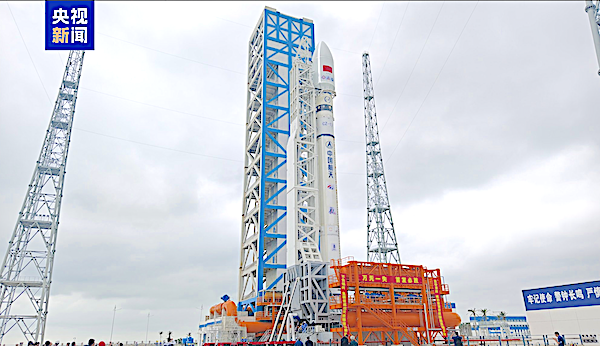

China plans a Monday launch of its Long March 12 carrier rocket from Wenchang Space Launch Site, of SatNet LEO Group, which is a series of launches deploying satellites into low Earth orbit for China’s GuoWang (SatNet) broadband internet constellation. China’s goal is to create a global broadband internet network that will total 12,992 satellites. These launches are designed to compete with other constellations such as SpaceX’s Starlink and Amazon’s Project Kuiper.
Commercial LC-2 has witnessed the launch of 1 rockets, including 1 orbital launch attempts. While Wenchang Space Launch Site, People’s Republic of China, has been the site for 38 rocket launches.
The Long March 12, manufactured by China Aerospace Science and Technology Corporation established in 1999, undertook its inaugural launch on 11/30/2024, is non-reusable and is active.
Long March 12 has 1 successful launch and 0 failed attempts, with a cumulative tally of 1 launches, currently with 0 pending launches in the pipeline.
The Long March 12 carrier rocket is a Chinese medium-lift launch vehicle that had its first launch on November 30, 2024 from the Shanghai Academy of Spaceflight Technology, using kerosene and liquid oxygen as propellant. It will be capable of placing at least 10 tonnes of payload in low Earth orbit and at least 6 tonnes in a 700 km Sun-synchronous orbit.
The Wenchang Space Launch Site is a rocket launch site located in Wenchang on the island of Hainan, in China that is formally a suborbital test center serving as China’s southernmost spaceport. The site was selected for its low latitude, 19° north of the equator, allowing for larger payloads to be launched. It is capable of launching the Long March 5, the heaviest Chinese rocket. Unlike launch facilities on the mainland, Wenchang uses its seaport for deliveries.
The China Aerospace Science and Technology Corporation (CASC) is the main contractor for the Chinese space program. It is state-owned and has a number of subordinate entities that design, develop and manufacture a range of spacecraft, launch vehicles, strategic and tactical missile systems, and ground equipment. It was officially established in July 1999 as part of a Chinese government reform drive, having previously been one part of the former China Aerospace Corporation. Various incarnations of the program date back to 1956.
